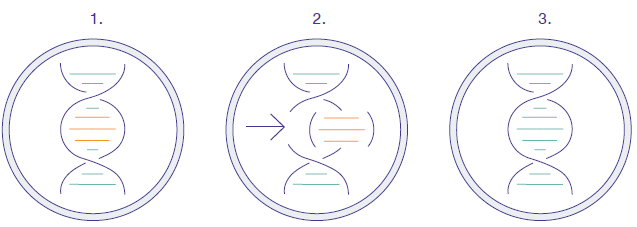Types of Genetic Modification

Genetic modification involves altering the DNA of an organism to achieve specific traits or characteristics. There are various techniques and methods used for genetic modification, and they can be broadly categorized into several types:
-
Recombinant DNA Technology:
- Description: Recombinant DNA technology involves combining DNA from different sources to create a new DNA sequence. This can be done by cutting and splicing DNA fragments using enzymes like restriction endonucleases and DNA ligases.
- Applications: It is widely used in creating genetically modified organisms, such as bacteria that produce insulin for medical use or crops with enhanced traits.
-
Gene Editing:
- Description: Gene editing technologies, such as CRISPR-Cas9, enable precise modification of specific genes within an organism's genome. These techniques allow for the targeted addition, deletion, or replacement of DNA sequences.
- Applications: Gene editing has applications in medicine (gene therapy), agriculture (developing genetically modified crops), and basic research.
-
Transgenesis:
- Description: Transgenesis involves introducing genes from one species into the genome of another species. The resulting organism is referred to as transgenic.
- Applications: Transgenic organisms are created for various purposes, such as producing crops with improved traits, creating animal models for research, and developing organisms that produce valuable proteins or pharmaceuticals.
-
Selective Breeding:
- Description: While not a modern biotechnological technique, selective breeding is a form of genetic modification through traditional breeding methods. It involves choosing organisms with desired traits to reproduce, gradually leading to the propagation of those traits in the population.
- Applications: Selective breeding has been used for centuries in agriculture and animal husbandry to develop breeds with specific characteristics.
-
RNA Interference (RNAi):
- Description: RNA interference is a biological process where RNA molecules inhibit gene expression or translation by neutralizing targeted mRNA molecules.
- Applications: RNAi is used in genetic research to study gene function and has potential applications in developing therapies by silencing specific genes associated with diseases.
-
Synthetic Biology:
- Description: Synthetic biology involves the design and construction of new biological parts, devices, and systems, or the redesign of existing biological systems for useful purposes.
- Applications: Synthetic biology can be applied to create organisms with novel functions, such as bacteria that can produce biofuels or organisms with artificial genetic circuits.
-
GMOs (Genetically Modified Organisms):
- Description: GMOs are organisms whose genetic material has been altered in a way that does not occur naturally through mating or natural recombination.
- Applications: GMOs are widely used in agriculture to create crops with improved traits, such as resistance to pests, tolerance to herbicides, or enhanced nutritional content.
It's important to note that each type of genetic modification has its own set of applications, advantages, and ethical considerations. The field of genetic modification is dynamic, with ongoing research continually expanding the range of techniques and their potential applications.
Thank you.
